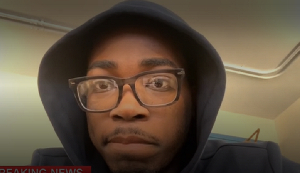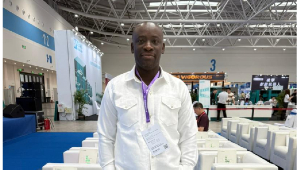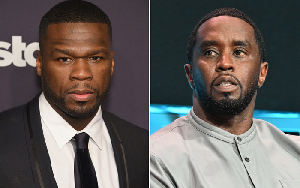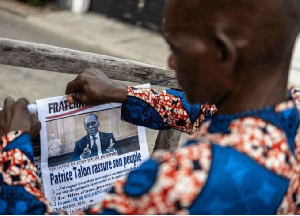By Kofi Ata, Cambridge, UK
I have been unable to listen to or watch the live coverage of the Supreme Court (SC) presidential petition hearing for the past two weeks. However, I caught the glimpse of the last minutes of last Thursday’s hearing and this article is the assessment of what I observed in those few minutes.
At the time, lead counsel for the petitioners, Mr Philip Addison was cross examining the key witness for the second respondent and Chairman of the Electoral Commission (EC), Dr Kwadwo Afari-Gyan, on some extracted voters’ register from Mampong Constituency. I heard Dr Afari-Gyan confirm that the two pictures appeared to be the same person but their ages were different (in 40s and 70s) and that pages five and six were different from the original register held by the EC. Later, counsel said he wanted to tender the document in evidence. Lead counsel for the second respondent, Mr Quarshie Idun attempted to raise an objection. Just before the document was accepted, lead counsel for the third respondent, Mr Tsatsu Tsikata raised an objection by questioning the authenticity of the document. He was supported by lead counsel for the first respondent, Mr Tony Lithur, to which Mr Addison attempted unsuccessfully to rebut the objection.
Two of the Justices also raised questions about the document and explained that an extract of an original document should be exactly the same as that section of the original but in his case, pages five and six were different from the original. It was also pointed out by the second Justice that, in this day and age when it was possible to impose the head of one person onto another’s picture, the authenticity of the extract should be treated with caution. At this point, Mr Addison in a surprise move, quickly made a u-turn and asked to withdraw his document, which the Justices kindly allowed him to, though the three lead counsels for the respondents were in unison that, the Justices made a determination on their objection.
I was baffled by this u-turn and made me question if Mr Addison, perhaps, knew that the document he wanted to tender in evidence was questionable or had been tampered with and if that was the case, could he be sanctioned for professional misconduct or for perverting the cause of justice? Was that why he quickly ran for cover?
The SC petition hearing has been a real eye opener for me for a number of reasons. First, there were matters on material evidence, disclosure or discovery at the case management stages and prior to the full hearing beginning and second, the conduct of the lead counsels. Despite specific orders by the court on the former, after over 40 days of hearing the court is still confronted with surprises by way of material evidence being sprang in court as if they were from the magician’s box as evidence to be tendered, though these materials existed prior to the hearing and all parties had knowledge of their existence in advance. I have never come across such surprises in my experience within UK’s jurisprudence. Perhaps, things are done differently in Ghana.
With the exception of the lead counsel for the second respondent, Mr Quarshie Idun, the three remaining lead counsels have conducted themselves unethically and unprofessionally but not incurred any sanctions. However, what happened on Thursday July 11, 2013, if it turns out that the document in question was not a genuine extract but a doctored one, then, that went far below the belt of professional and ethical conduct for lawyers. If (and that is a big if), the suspicion turns out to be true, then, it is tantamount to perverting the course of justice, which should not be allowed to go quietly.
Curzon’s Dictionary of Law defines perjury as “offence committed by a person lawfully sworn as a witness or interpreter in a judicial proceeding who wilfully makes a statement, material in the proceeding, which s/he knows to be false or does not believe to be true”. Perjury refers specifically to making a false statement under oath. It is rare for lawyers to commit perjury for the simple reason that lawyers generally do not make statements under oath. That is what witnesses do. Instead, lawyers make arguments based on the testimony of witnesses, but they do not do so under oath. In other words, lawyers cannot commit perjury, otherwise Addison might have committed one if the document in question turned out to be a forgery. Nonetheless, lawyers have to operate within a code of professional conduct and also have ethical obligations to their clients and the court.
I am not a lawyer but when I trained as Senior Caseworker who provided advice to and represented clients, I was advised by the Solicitors and Barristers who provided the training to act as an advocate and or an attorney and therefore operate and observe their ethical obligations. Among these were:
A lawyer shall not knowingly: make a false statement of material fact or law to a tribunal; fail to disclose a material fact to a tribunal when disclosure is necessary to avoid assisting a criminal or fraudulent act by the client; or offer evidence that the lawyer knows to be false. If a lawyer has offered material evidence and comes to know of its falsity, the lawyer shall take reasonable remedial measures, etc.
I was also made aware that a lawyer may refuse to offer evidence that s/he reasonably believes is false. In an ex parte proceedings other than a grand jury proceeding, a lawyer shall inform the tribunal of all material facts known to him/her which will enable the tribunal to make an informed decision, whether or not the facts are adverse. These obligations continue to the conclusion of the proceeding, and apply even if compliance requires disclosure of information otherwise protected by confidentiality information.
Protected confidential information means a lawyer shall not reveal information relating to representation of a client unless the client consents after consultation; except for disclosures that are implicitly authorized in order to carry out the representation, and except s/he may reveal such information to the extent s/he reasonably believes necessary to prevent the client from committing a criminal act that the lawyer believes is likely to result in imminent death or substantial bodily harm; or to establish a claim or defence on behalf of him/herself in a controversy between the lawyer and the client, to establish a defence to a criminal charge or civil claim against the lawyer based upon conduct in which the client was involved, or to respond to allegations in any proceeding concerning his/her representation of the client, etc.
I do not know what pertains in Ghana and under what rules and regulations lawyers in Ghana operate but I will be surprised if they are different from the above because the similar rules and obligations apply in most countries.
The big question is, did Mr Addison know that the extract he presented in court, he used it to cross examine Dr Afari-Gyan and he sought to tender in evidence was not authentic? If yes, when did he know? If he knew in advance that the document was not authentic at the time he provided to it to the witness in court and relied on it to cross examine him as well as sought to tender it in evidence, then, what was he trying to achieve? Knowingly deceive the court and pervert the course justice?
It is not possible to conclude from what happened in court that Mr Addison knew that the document in question was not authentic. However, how he retreated when some of the Justices doubted its authenticity by withdrawing it could suggest that he sensed danger of it being exposed as forgery and decided to back down before it became too late. This is my layman’s guess work but it’s worth some consideration because this case is about the future of Ghana and no legal tricks should be resorted to, which could lead to miscarriage of justice.
Normally, counsels act on the instructions of their clients. However, in this petition, I am not certain of what role/s Mr Addison’s clients (Akufo-Addo, Bawumia and Obetsebi-Lamptey) play in the preparation of this particular document and what instructions they gave to Mr Addison on its use. However, it appears to me that counsels for the petitioners, first and second respondents have engaged a team of lawyers and party members who produce and examine documents to be used as evidence in court. From these arrangements it is possible that their clients are relying on them to produce the necessary evidence to prosecute and defend their cases. It is also my belief that lead counsels have trusted their subordinates and those working with them to do an honest job to produce reliable and accurate documents for the court.
What is also not clear is what sort of checks and balances are done by the lead counsels when their subordinates provide them with documents for courts to ensure that the documents are either genuine and or information contained therein are factually accurate. In other words, if these subordinates or party members who are assisting them tamper with material evidence, would they bring such criminal activity to the notice of lead counsels? Is it not the duty of lead counsels to ensure that their subordinates and party members supporting the production of material evidence act honestly and in good faith?
There are obviously more questions than answers and I am not in a position to provide those answers. However, I am of the view that what happened in court on Thursday July 11, 2013, particularly the used of this document in court, was, to say the least, fishy. Mr Addison’s fishing expedition or pair trawling as Mr Lithur put it is becoming unbecoming. His expedition appears to have turned into making evidence where there is none. This is unhealthy, unethical and unprofessional. A new development that should not be glossed over.
Kofi Ata, Cambridge, UK
Opinions of Sunday, 14 July 2013
Columnist: Ata, Kofi














